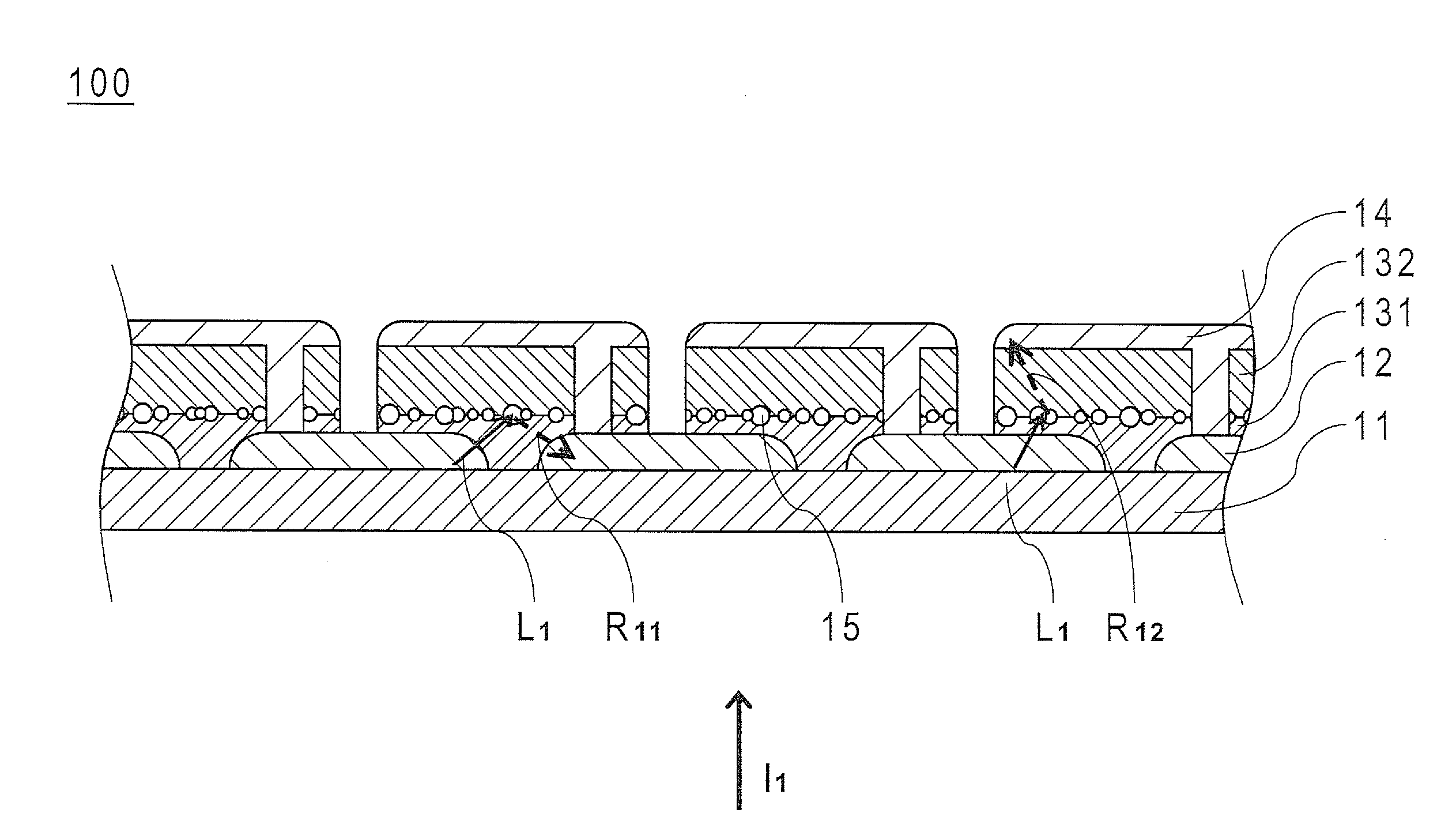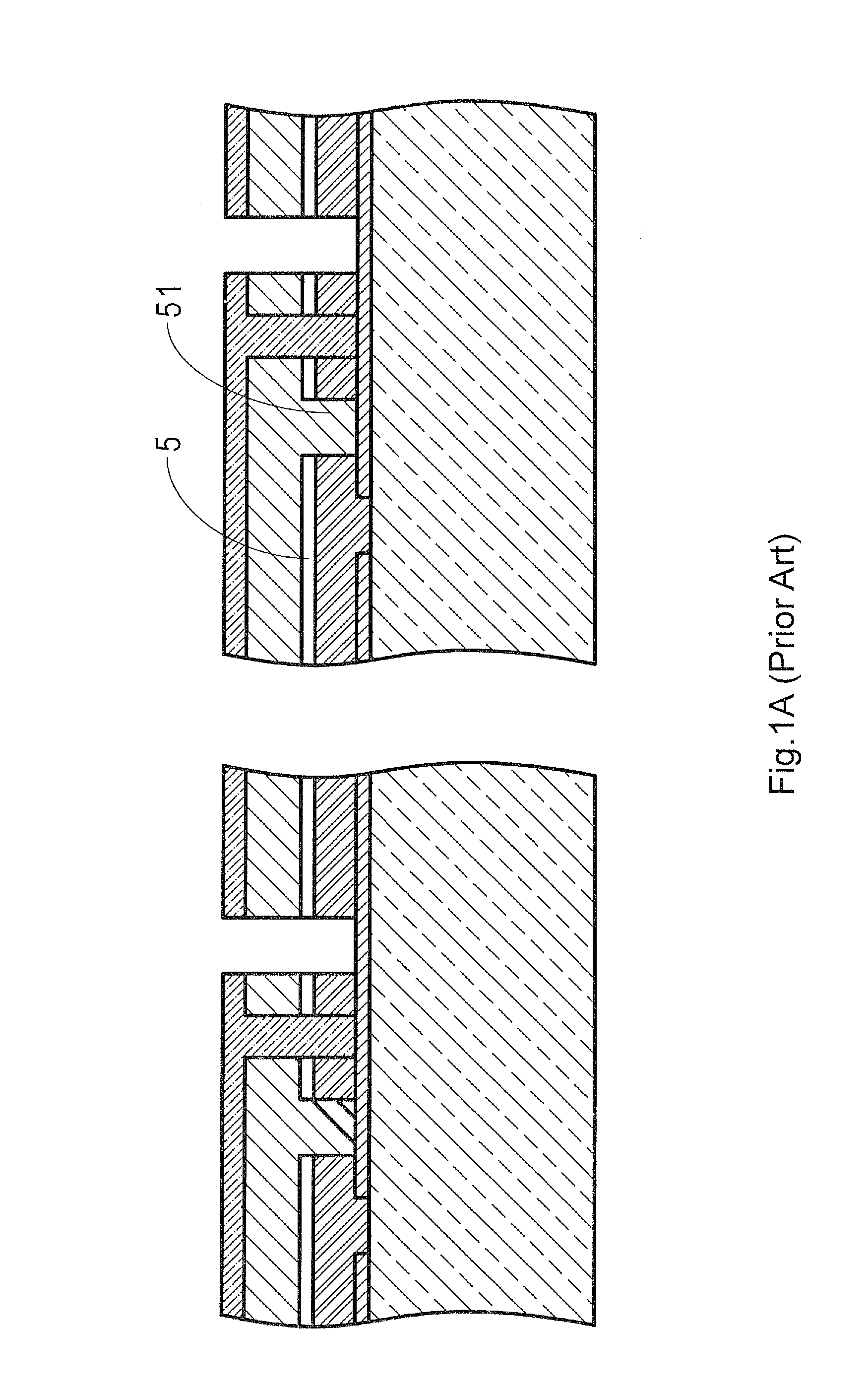Thin film solar cell having opaque and highly reflective particles and manufacturing method thereof
a solar cell and film technology, applied in the direction of basic electric elements, electrical equipment, semiconductor devices, etc., can solve the problems of high probability of leakage current, short circuit, and limit of photoelectric conversion efficiency, and achieve the effect of increasing the propagation path of incident ligh
- Summary
- Abstract
- Description
- Claims
- Application Information
AI Technical Summary
Benefits of technology
Problems solved by technology
Method used
Image
Examples
case 1
[0026] When the incident light L1 enters the thin film solar cell 100 from the substrate 11 along the entry direction I1 and passes through the first photo-electric converting layer 131, the first photo-electric converting layer 131 absorbs a part of the short-wavelength portion of the incident light L1 while the remaining part of the short-wavelength portion that is not absorbed by the first photo-electric converting layer 131 strikes and is reflected by the surfaces of the opaque and highly reflective particles 15, thus generating reflection R11. The propagation path of the reflection R11 increases the propagation path of the incident light L1 through the first photo-electric converting layer 131 and allows the reflected part of the short-wavelength portion of the incident light L1 to be absorbed by the first photo-electric converting layer 131, thus enhancing the light absorption rate of the first photo-electric converting layer 131.
case 2
[0027] When the incident light L1 enters the thin film solar cell 100 from the substrate 11 along the entry direction I1, passes through the first photo-electric converting layer 131, and strikes the surfaces of the opaque and highly reflective particles 15 tangentially, the incident light L1 is reflected toward the second photo-electric converting layer 132 and thus generates reflection R12. The propagation path of the reflection R12 lengthens the propagation path of the incident light L1 through the second photo-electric converting layer 132, thus increasing the reflectivity of the second photo-electric converting layer 132 to the long-wavelength portion (e.g., infrared radiation) of the incident light L1, as well as raising the utilization rate of the long-wavelength portion (e.g., infrared radiation) of the incident light L1 in the second photo-electric converting layer 132. If existing technology were used, which is poor at altering the propagation path of long-wavelength radia...
PUM
 Login to View More
Login to View More Abstract
Description
Claims
Application Information
 Login to View More
Login to View More - R&D
- Intellectual Property
- Life Sciences
- Materials
- Tech Scout
- Unparalleled Data Quality
- Higher Quality Content
- 60% Fewer Hallucinations
Browse by: Latest US Patents, China's latest patents, Technical Efficacy Thesaurus, Application Domain, Technology Topic, Popular Technical Reports.
© 2025 PatSnap. All rights reserved.Legal|Privacy policy|Modern Slavery Act Transparency Statement|Sitemap|About US| Contact US: help@patsnap.com



